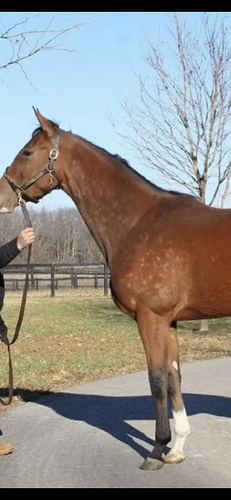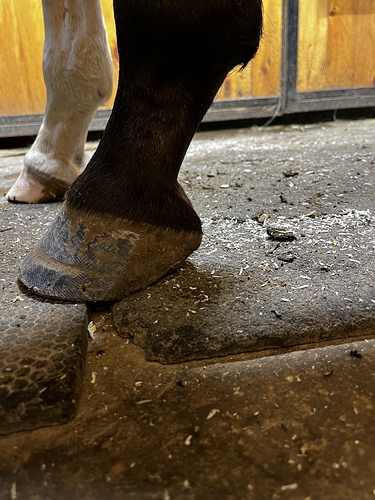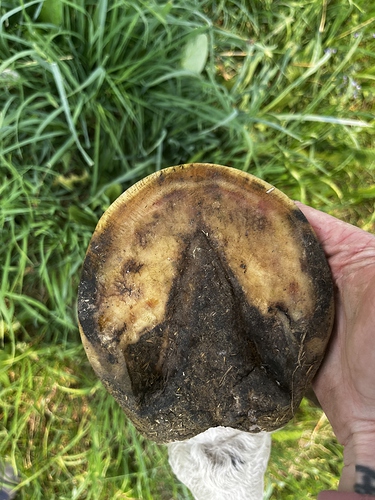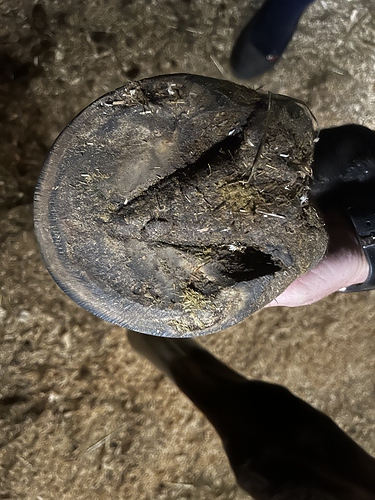A little update. Spoke to vet, he’s coming tomorrow to do some new rads to make sure the farrier is doing a correct trim.
Had a new farrier consult this morning. He seemed good from what he was saying.
He cleaned up Phillys feet today to take a look at what’s going on, he was quite meticulous and took an hour to measure angles, watch, little trim, watch etc which I appreciated over wham bam chopped off your horses foot.
New farrier feels the fronts are typically tender and flat from the hard as rock footing and track trimming he sees in ottbs. However he felt
The balance was off and the hoof was bearing more weight on the toe. There appeared to be a spot with an old abscess that has come out, soles not overly tender with testers but they were soft for sure.
He did the tiniest modification, right front (black) walked off almost looking sound, a few tentative steps but got better, white front is about 30% better but there appears to be bruising at the toe.
He prescribed a hoof hardener and poultice wrap as he expects another abscess in white foot.
Tomorrow we are going to revisit rads once they are finish, discuss with vet on best course of action.
Attaching photos of sole, he didn’t trim/brush the frog area so it’s a bit black, however the frog is actually getting hard where it was soft a week ago.
Hoping to avoid shoes but may be needed until ground softens, bad timing for the world to go dry…





 I’ve switched Conrad out from him but was hopeful it wouldn’t be a persistent issue with Phil.
I’ve switched Conrad out from him but was hopeful it wouldn’t be a persistent issue with Phil.

